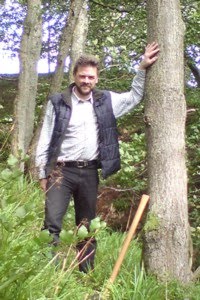By the Bronze Age in British Isles, and certainly in terms of the proto-historic Late Iron Age, we have what historians might call petty kings and aristocracy, sometimes with a more wider regional and national institutions. Although our museums have their weapons and treasures, architecturally, we have lost sight of the petty king in his palace and the homes of the aristocracy, always such a feature of our countryside.
But this is just the tip of an iceberg of ignorance, since we know very little of the charcoal burner in his hut, and have no real notion of cart sheds or byres; only “roundhouses”, and, thousands upon thousands of uninterpreted postholes.
It is this functional deficiency that I hope to explore in series of posts, since it represents a serious gap in our knowledge of an area fundamental to understanding any culture. One way of broadening thinking about function is to ask the question; what buildings does a moderately complex hierarchical agricultural society require?





























